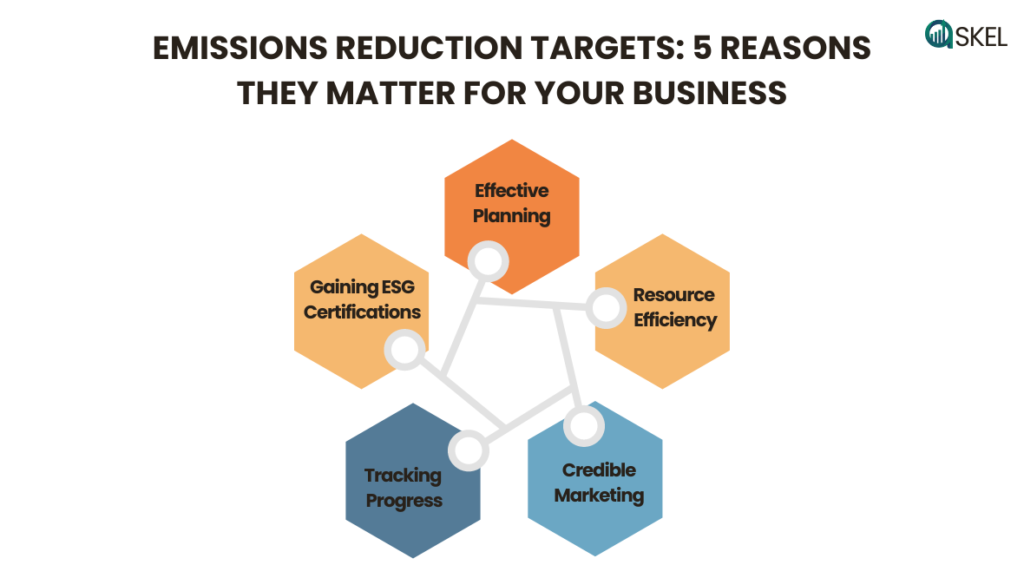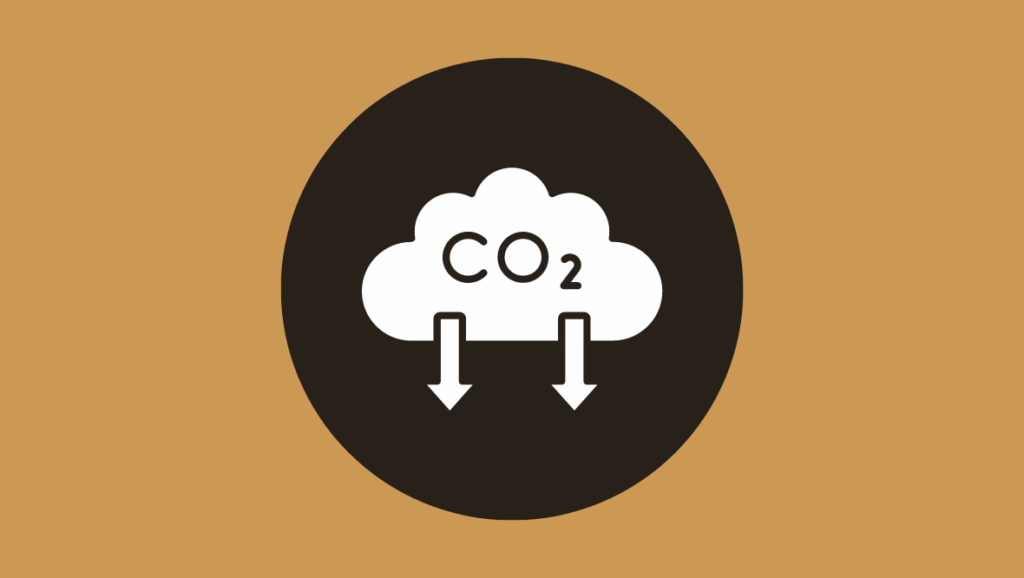5 Reasons Why Businesses Need to Set Emissions Reduction Targets

Five compelling reasons why setting emissions reduction targets is crucial for businesses committed to sustainability and long-term success.
Setting emissions reduction targets is becoming increasingly essential for businesses worldwide. As climate change intensifies and regulatory pressures mount, companies must adapt to remain competitive and responsible. Emissions reduction targets provide a structured approach to minimising environmental impact, enhancing corporate reputation, and long-term sustainability.
This guide explores five compelling reasons why establishing clear emissions reduction goals is essential for businesses of all sizes. From streamlining operations and boosting resource efficiency to achieving sustainability certifications and attracting new customers, these targets can empower your company to reduce its environmental footprint while creating value and cutting cost.
1. Assistance With Planning
Emissions reduction targets aren’t just aspirational goals; they’re powerful tools that propel effective planning and action. Here’s how a well-defined target can help with planning:
- Strategic Roadmap: Having a clear target helps in developing a framework for a comprehensive sustainability strategy. It helps you identify specific areas for improvement and prioritise reduction activities based on your company’s unique emissions footprint.
- Data-Driven Decisions: Setting a target incentivizes data collection and analysis of your emissions sources. This data becomes the foundation for informed decision-making. You can track your progress over time, measure the effectiveness of implemented strategies, and identify areas requiring further attention.
- Alignment and Focus: A clearly defined target fosters alignment across all levels of your organisation. Management and employees alike understand the company’s commitment to sustainability and the specific goal you’re striving towards. This creates a shared sense of purpose and motivates everyone to contribute towards achieving the target.
- Resource Allocation: Emissions reduction targets often lead to a more strategic allocation of resources. Knowing your target and the actions required to achieve it helps you prioritise investments in technologies, personnel, or training programs that will have the most significant impact on reducing emissions. Resources are no longer scattered; they’re directed towards achieving a focused sustainability objective.

2. Resource Efficiency and Cost Saving
Setting a clear emissions reduction can have significant financial benefits. Many emission reduction initiatives directly and indirectly contribute to resource efficiency such as lower energy consumption, incorporating closed looped circular systems and waste reduction.
Additionally, setting a clear target can promote innovation within your organisation. Employees become invested in finding creative solutions to reduce emissions, leading to new ideas for optimising processes or minimising resource use. These employee-driven innovations can deliver long-term cost reductions and contribute to a more sustainable future.
3. Gaining ESG Certifications
Today, stakeholders are increasingly seeking out businesses that prioritise sustainability. Achieving a recognized sustainability certification demonstrates your commitment to reducing your environmental footprint and can be a powerful differentiator. These certifications, awarded by independent bodies, validate your emissions reduction efforts and showcase your dedication to responsible practices.
In most cases having a clearly defined emissions reduction target displays a clear strategy and concerted effort to reduce and therefore helps your organisation to obtain a higher/better ranking or score. This in turn contributed to gaining the maximum value out of emissions reduction efforts.
For years, forward thinking organizations have recognized the benefits of setting public greenhouse gas (GHG) reduction targets. Setting aggressive GHG reduction targets can: Galvanize reduction efforts at an organization and often leads to the identification of additional reduction opportunities, help garner senior management attention and increase funding for internal GHG reduction projects, encourage innovation, improve employee morale, and help in the recruiting and retention of qualified employees.
EPA Center for Corporate Climate Leadership, EPA
4. Facilitating Monitoring and Tracking Progress
Setting emissions reduction targets is a foundational step in effective performance tracking. Once a target is established, it provides a clear goal and a benchmark for assessing a company’s greenhouse gas (GHG) performance annually. This structured approach to monitoring and tracking progress ensures that businesses stay on course and make informed adjustments as needed.
Having a target also requires companies to implement monitoring systems. Regular data collection and analysis help identify trends, measure success, and pinpoint areas requiring improvement. Advanced tools and software can streamline this process, offering real-time insights into emission levels across different operations. These technologies not only facilitate precise tracking but also help in visualising data through dashboards and reports, making it easier to communicate progress internally and externally.
5. Effective and Credible data-backed Marketing
In today’s market, consumers and stakeholders are increasingly conscious of environmental issues, in particular GHG emissions, that reflect the business’s impact on climate change. Establishing clear emissions reduction goals allows businesses to communicate to their stakeholders that they are committed to reducing emissions and are willing to set a goal, share it publicly and then work towards achieving it.
A clear goal, enabled by effective monitoring and tracking systems also enables data availability. This data can be used for marketing purposes and to support sustainability claims, thereby enhancing a company’s credibility. By sharing verified data on progress towards emissions reduction targets, businesses can build trust with their audience. This transparency helps to differentiate the company from competitors and protects the company from any regulatory greenwashing related risks.


